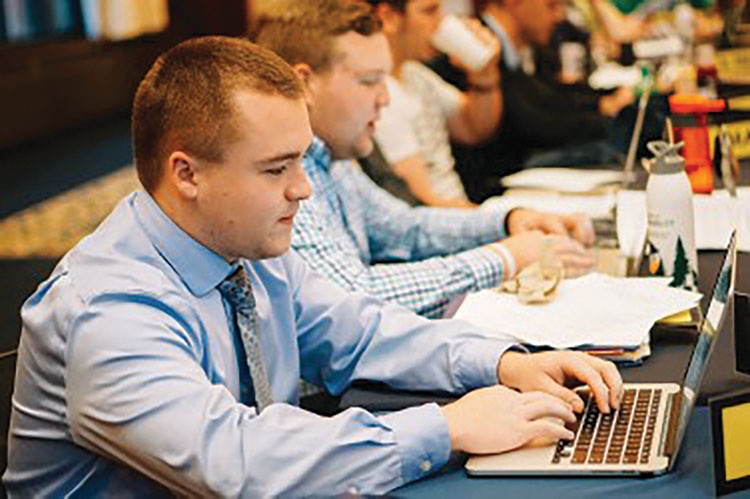Student Senate passes resolution, planning for the future
Members talk about improving diversity, strategic planning and renovation
More stories from Hillary Smith
Photo by Amanda Thao
The Senate officially approved two new student organizations.
Groundwork for change
A resolution outlining the goals and priorities of Student Senate for the duration of the year was passed with a 27-0-0 vote.
The executive board members of Student Senate drafted the resolution. These members include the president, vice president and chief of staff, all of whom oversee the executive staff, which is composed of commission directors and coordinators.
The priorities were selected by individual board members in order to “inform the student body about issues about and affecting the University,” as written in the resolution.
Student Office of Sustainability Director Ethan Fuhrman said he thinks the resolution sets “ambitious goals” and encouraged his fellow Senate members to vote the resolution up.
Nathan Altmann, director of the Academic Affairs commission, has been working to improve diversity and inclusivity on campus. In past meetings, he has reported meeting with professors to discuss necessary steps such as faculty training and course requirements that would contribute toward a more positive campus climate.
Altmann said after discussing issues such as racism on campus with students at the town hall meeting, he recognized the weaknesses in current academic standards and the importance of initiating change.
“By not taking these issues seriously, we are failing to prepare our students to be successful in a globalized world and most importantly, abandoning our responsibility to improve the campus climate, our state and our country,” Altmann said.
The resolution for the Academic Affairs commission outlined their goal to better the campus’ welcoming atmosphere. Such steps would include developing a required course and immersion program, faculty training and improving education campaigns to increase student awareness of the issues.
“You can go through your whole college career without understanding microaggressions,” Altmann said. “That’s a huge problem as people and it’s also a huge problem in the real world.”
University’s strategic plan summary
Plans for the future are being made in other university entities as well. MJ Burkardt, special assistant to the chancellor, presented the UW-Eau Claire Strategic Plan. The plan outlines focuses and priorities for the next four years at Eau Claire.
“We want the next 100 years to be as distinctive and as focused on excellence as our last 100 years,” Burkardt said.
Ensuring student success; strengthening the commitment to equity, diversity and inclusivity; and fostering a resilient university were the three main aspirational goals outlined in the plan summary.
In other news
Some steps geared toward improving the campus are already in motion.
Resident Hall Association liaison Lillian Vang announced the bowling alley in Hilltop Center is facing impending destruction. Due to low attendance, Vang said, there are plans in the works to replace the bowling alley with something more conducive to student socialization, such as a coffeeshop similar to The Cabin in Davies.
Though nothing is final, Vang said the plans are probable unless a huge spike in attendance at the bowling alley occurs soon.
In addition, two groups gained official approval to be student organizations. The Researchers and Innovators Club and the Music Students of Color Club were both approved by the Senate; both motions to approve the organizations were received with rounds of vocal affirmations.

